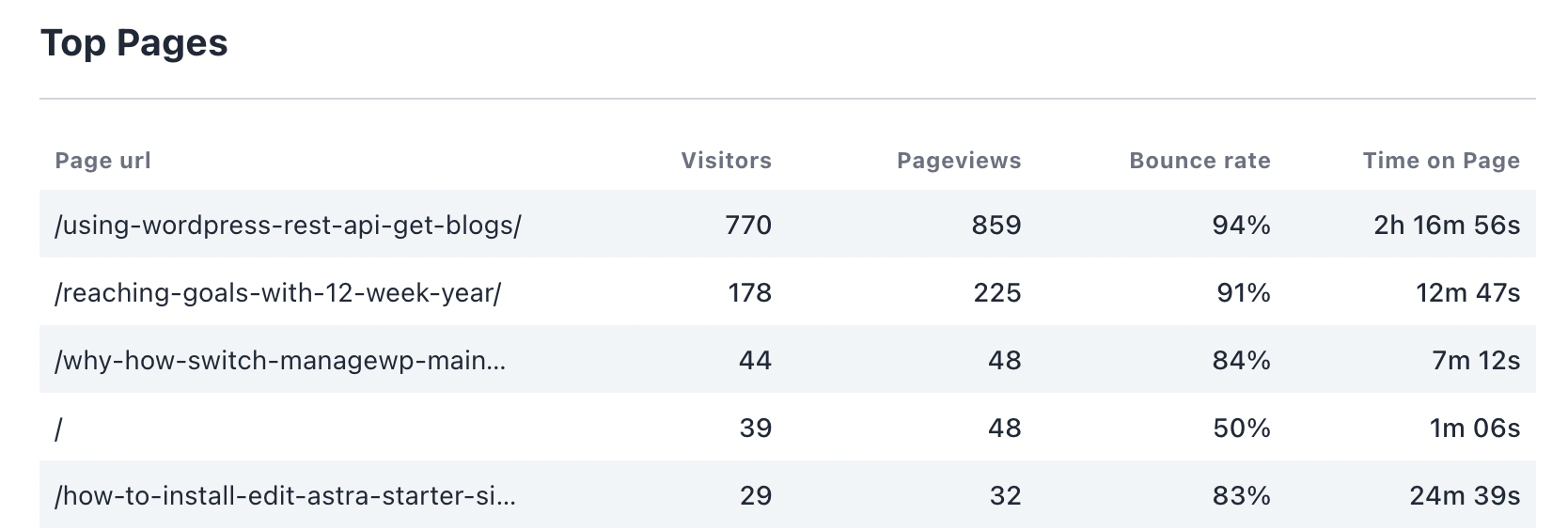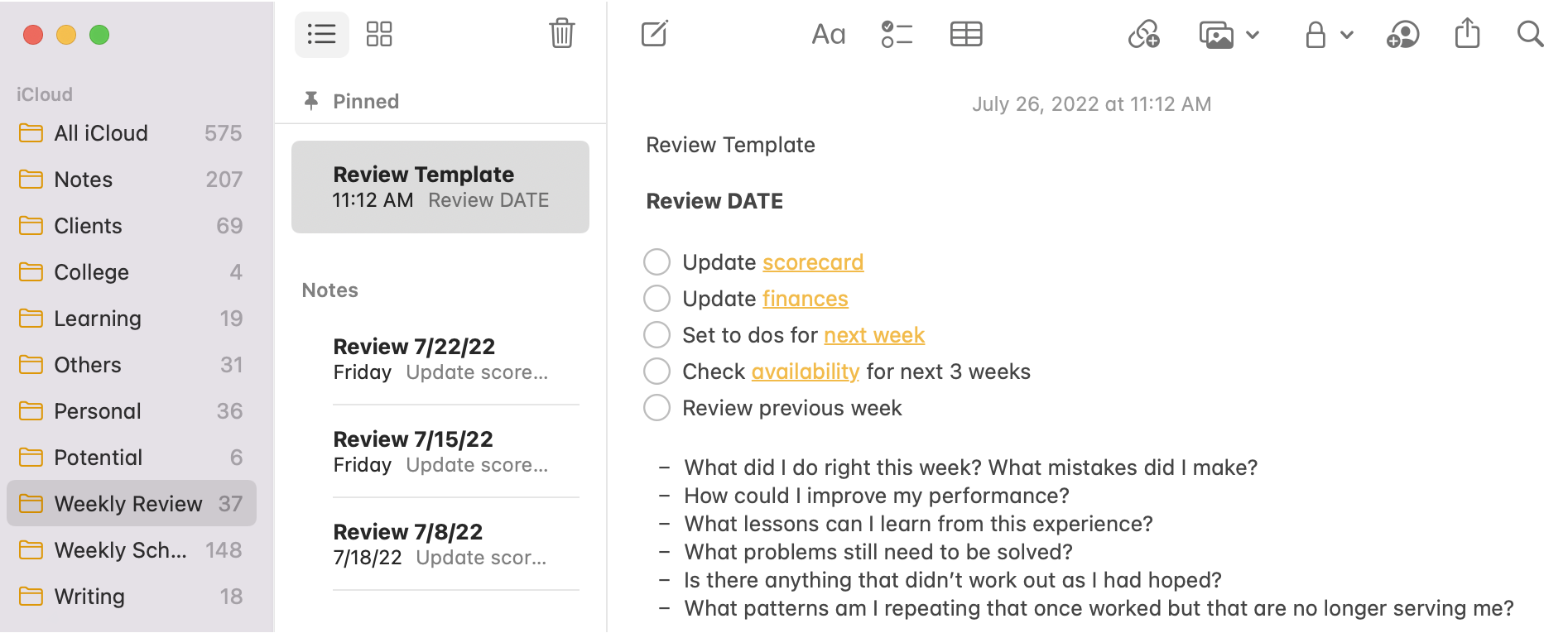How to stop and review what’s working and what’s not
I don’t know about you, but most of the time, I am busy doing all the things. Every day starts with a long to do list. I work hard to get through it all only to start again the next day.
As much as it’s great to feel accomplished by checking items off my to do lists, sometimes I need to stop to consider what’s working and what’s not.
I’m currently part of a 3-month mastermind and our main goal is to create a body of work to showcase our specialization. Most of us are writing LinkedIn posts regularly. Some of us are recording podcast episodes, writing books or creating videos.
So far I’ve written seven LinkedIn posts, but I’m halfway through the mastermind and am just now sitting down to figure out what worked and what didn’t.
(And don’t worry, this post isn’t just about how my LinkedIn posts have gone — we’ll talk about how to review other aspects of your work and life as well.)
Reviewing Written Content
If you write blog posts, email newsletters or social media posts, take some time to review what you’ve been doing. Figure out what’s been working and what hasn’t, then make a plan with adjustments on how you can move forward.
Here are a few data points to consider:
- When did I post? (Weekday/weekend, morning/afternoon/evening)
- What was the topic?
- How did I use media (images, video, audio) in my content?
- How long was the content?
- What was the quality of the content? (Opening hook, interesting and useful content, relevant to audience)
- For blog posts
- How many visitors and page views did I receive?
- What was the bounce rate and time on page for the past 7 or 30 days?
- For emails
- How many opens, clicks and responses did I receive?
- For social media
- Did I post on the platform or with a non-native tool, like a scheduler?
- How many impressions, likes, shares and comments did I receive?
What patterns do you see? What stands out as either exceptional OR sub-par? How can you adjust your actions to do better in the future?
My LinkedIn Posts
I’ve written seven LinkedIn posts as part of the mastermind (so far) and posted all of them directly on the platform.
The first post was well-received with 412 impressions, 13 likes, one comment and three shares. The opening hook was personal, which I think helped.

This post had a 311 impressions, 8 likes and 3 comments. It had a decent opening hook with an opinion (you need an email list).
Another post had more impressions and engagement (840 impressions, 10 likes and 9 comments), opening with an intriguing question that a friend of mine had asked.
The follow up post bombed big time though with only 63 impressions and one like. The introduction was boring and the link was to another LinkedIn post.
Scrolling through past posts (pre-mastermind), most have under 100 impressions and very few likes. Many of these were posted using a scheduler (Publer). One stood out as an exception where I had recorded a video; it received 517 impressions, 18 likes and 8 comments. I had posted that on LinkedIn directly.
So, what’s the takeaway? For me, I want to lean more towards:
- Posting regularly (once per week)
- Posting directly on LinkedIn
- Using a great opening hook
- Being personal when appropriate
- Not linking to past LI posts
- Trying images or video to supplement the post
My Top Blog Posts
I use Plausible Analytics to track visits on my website at renemorozowich.com. In the past 30 days, I’ve had the most visits to three of my blog posts — about the WordPress API, The 12 Week Year and switching from ManageWP to MainWP.

This data can help me make decisions. Since The 12 Week Year post is one of my most popular, perhaps I could build a product around this topic. I do have a free video series that people can sign up for on the post that is also successful.
Free content (in-depth blog post) ➡ Opt-in content (sign up for free videos) ➡ Paid content (a template or mini course)
Reviewing Projects
In the software development world, a recap after a project is called a post-mortem.
HubSpot has some great quantitative, qualitative and subjective questions to ask during a project post-mortem, including:
- Did we provide all deliverables outlined in the project scope?
- Were pre-defined success metrics achieved?
- Did we deliver work at the high standards we and our client expect?
- Does the client agree?
- How was working with the client?
- What changes would they make to this type of project in the future?
Goskills also suggests some great questions including:
- Is there one part of this project you feel the most proud of?
- Do you think we reached our goal with this project?
- What do you think contributed to the success of this project?
- How do you think we can improve our process for next time?
A good friend of mine wrote a post-mortem on a failed membership site that he created many years ago. He cites that the project failed because there was no MVP (minimum viable product), lack of a niche, confusion between user wants and user needs and unclear branding.
Reviewing Your Week
I use Apple Notes daily for my task lists. I have a Weekly Review folder and a pinned note with a review template. At the end of each week, I:
- Update my scorecard (I track calls, proposals and contracts)
- Update my finances
- Set my to dos for next week
- Double-check my calendar availability
- And review the previous week

There are so many questions you can ask yourself about the week. Here are a few of mine:
- What did I do right this week? What mistakes did I make?
- How could I improve my performance?
- What lessons can I learn from this experience?
- What problems still need to be solved?
- Is there anything that didn’t work out as I had hoped?
- What patterns am I repeating that once worked but that are no longer serving me?
Search the web for additional inspiration (start with Habitgrowth, The Starfish Model, All About Planners, Productivity 9 to 5 and todoist) or make up your own questions.
Reviewing Previous Digital Products
If you’ve created a digital product before, you have something to review! Whether it was a success or failure, look at the project as a whole including what worked and what didn’t. Ask yourself the following questions (and/or create your own) 👉
- What product did you create?
- What problem did your product solve?
- Who was the target audience for your product?
- How did you think of and vet the product idea?
- When did you start work and when did you launch the product?
- How much time and money did you put into the product?
- How did you promote the product (before and after launch)?
- How do you feel about the quality of the finished product in terms of content, images, design, video quality, etc.?
- What kind of return have you had on your product? How many page views, how many leads (if you had a lead magnet) and how many sales?
- What is the perceived value of the product?
- How you feel about the product?
- What went well?
- What did you learn?
- What would you change going forward?
Reviewing Other Areas of Your Life
You can evaluate any area of your life (physical health, emotional health, spiritual health, family, friends, social life, career or finances) or any subset of one of those categories.
Pose a few questions about the topic. Write down the answers. Look for patterns. Look at what’s not working for you. Try new things.
What’s one area of your life that you would like to dig into?